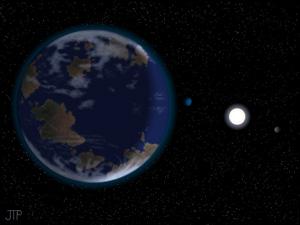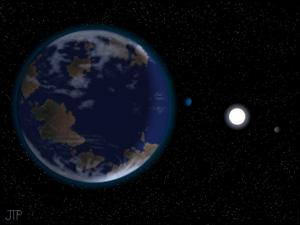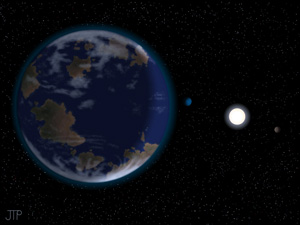A world seven times the size of Earth has been found in the habitable zone of a star similar in size to our sun, potentially allowing it to support an environment like our own with oceans and a day-to-night effect.
An international astronomy team discovered the planet orbiting the star HD 40307, located some 42 light-years away from Earth in the constellation Pictor. Called HD 40307g, the planet is circling its star at a similar distance to Earth’s orbit around the sun.
There are five other super-Earths in the system, three of each were already known. They are up to 10 times the size of Earth and may have a solid surface, but three of them are too close to their sun to have water in liquid form.
“Planetary systems with multiple super-Earths have been observed several times,” said study co-author Guillem Anglada-Escude of Gottingen University in a press release.
HD 40307g is in the star’s outermost orbit, where it would receive about as much energy as Earth receives from our sun, meaning the planet may have liquid water and an atmosphere able to support life.
“The star HD 40307 is a perfectly quiet old dwarf star, so there is no reason why such a planet could not sustain an Earth-like climate” Guillem said.
During its orbit, the planet also appears to be rotating on its own axis like Earth. If so, this means it would experience day and night.
According to the Planetary Habitability Laboratory, six other potentially habitable exoplanets have been discovered: Gliese 581d, HD 85512b, Kepler-22b, Gliese 667Cc, Gliese 581g, and Gliese 163c.
The findings will be published in the upcoming Astronomy & Astrophysics journal.
The Epoch Times publishes in 35 countries and in 19 languages. Subscribe to our e-newsletter.






